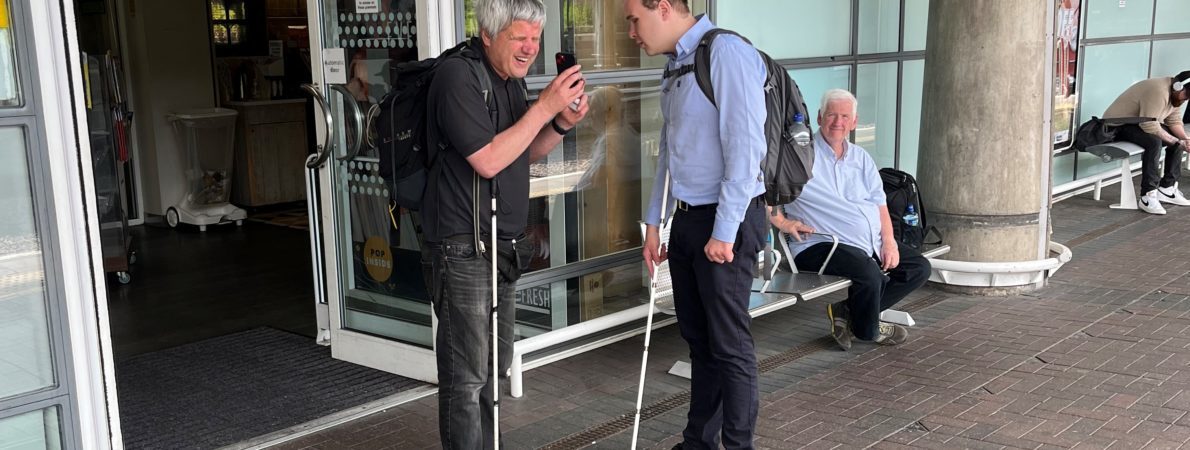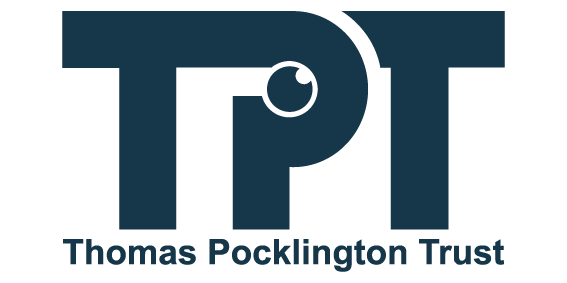Specialist outdoor navigation solutions have been empowering blind and partially sighted people with route planning capabilities and navigating from A to B for decades but what about indoor navigation?
Despite the advances in outdoor navigation, challenges still include navigating the last part to a destination or confidently meeting an appointment without being unintentionally stuck at a reception somewhere.
As tech companies of all shapes and sizes have been investing in research and developing mapping technologies, what does the future hold for blind and partially sighted consumers and how close are we to finding solutions for some of these challenges?
In this blog, we will explore some of the recent developments in indoor navigation technology and offer a perspective on what could become possible over the next few years.
What is around me
Most map apps can already provide a decent overview of the buildings and roads nearby. Indeed some apps such as Microsoft SoundScape have been designed to present this information using audio imagery, adding additional detail.
For instance, hearing a message like “coffee shop in 30 feet” through your right ear also indicates that the identified landmark can be found on your right side.
But what happens once you have entered a building beyond the reach of satellites? Before we dive into the exciting arena of indoor navigation, let us first acknowledge the recent tremendous strides around object recognition brought about by enhancements in artificial intelligence (AI) and digital photography.
Apple’s recent People Detection and Door Detection features borrow techniques originally developed for self-driving cars to provide immediate accurate information about nearby people and doors.
People Detection was a timely development from 2020 in the context of physical or social distancing. It offered blind or partially sighted people guidance on their proximity to other people nearby through their smartphone.
Similarly for 2022, Door Detection can be used both inside and outside to locate doors and door handles, directly addressing a key navigation challenge experienced by blind and partially sighted people.
To find out more check out our video:
New Tech: hands on video demonstration of Door Detection in iOS 16
The great indoors
Tech companies are beginning to release indoor navigation solutions, though there is considerable variance in their approaches.
Bluetooth beacons are the most established idea for indoor navigation, enabling smartphone apps to triangulate their location by communicating with pre-installed beacon hardware.
The basic concept is to have a smartphone app connect to a local beacon instead of a remote satellite, enabling the phone to maintain awareness of its surroundings.
However, one reason solutions based on Bluetooth beacons have not yet been widely adopted is their additional complexity and associated overheads – after all, fixing a broken beacon may require greater time and expertise compared to reprinting a label.
Even so, short-range wireless technologies such as Ultra-wideband enable systems harnessing Bluetooth Beacons to provide extremely precise location information accurate to inches rather than feet or yards.
GoodMaps is a smartphone app capable of providing detailed location information including directions indoors. Its accuracy and capabilities are improving constantly.
Sight Loss Councils recently participated in GoodMaps testing at some Asda supermarkets for Purple Tuesday and had previously reviewed this at Manchester Airport Railway Station. Though our Sight Loss Council members have identified both positive and negative observations from their GoodMaps experiences, we are extremely excited by its future potential for empowering blind and partially sighted people to navigate independently across a wide range of indoor environments.
NaviLens is another compelling example of indoor navigation in action. Its NaviLens codes offer far greater sensitivity and accuracy than the more traditional, ubiquitous QR codes while being just as easy to deploy.
Public transport systems such as the New York Metro and across Barcelonan have already integrated NaviLens codes. We would not be at all surprised to find these appearing in prominent places around the UK soon.
Remote assistance on-demand
Sadly, modern technologies that can make life more straightforward in some respects, can also make life more complicated in others. For instance, why should any of us have to care where we are before deciding which navigation solution would be most helpful in whatever situation we might be facing?
Fortunately, remote assistance technologies can operate wherever an internet connection is available.
Apps such as Aira can connect a blind or partially sighted person with a sighted agent over a video call on-demand, providing reassuring access to professional assistance from anywhere at any time.
We are also beginning to see wearable products such as Envision Glasses make it possible to receive hands-free assistance through services like Aira.
Though costs of specialist wearable products including Envision Glasses are not insignificant, they are still very much worth considering in situations where specialist funding sources such as the Disabled Students’ Allowance (DSA) or Access to Work (AtW) are available.
Optimism for the future of indoor navigation
The promise of greater independence through indoor navigation technologies is slowly becoming a reality for blind and partially sighted people in certain situations.
With solutions such as GoodMaps and NaviLens already offering enhanced navigation experiences in supermarkets and train stations, there are plenty of reasons to be optimistic about the future.
Greater compatibility between emerging indoor navigation solutions will help increase awareness among blind and partially sighted consumers and aid further adoption across the widest possible range of venues.
TPT looks forward to working more with tech companies to continue to enable greater independence for blind and partially sighted people around the country.




